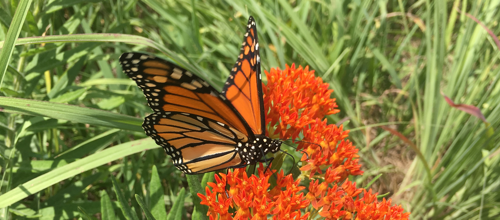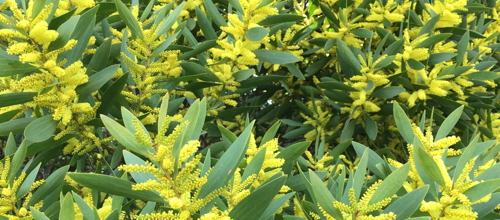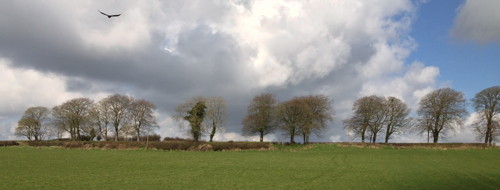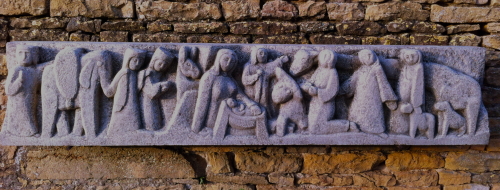Welcome to the 2021 virtual Conference Choir of the Northern California / Nevada Conference of the United Church of Christ. Everyone is invited to be a part of the choir. You do not have to be a member of an NCNC UCC congregation to join us.
Here’s an example of a previous conference choir piece that we did:
For the October conference gathering, we will sing a simple arrangement of “Leaning on the Everlasting Arms”, also known as “What a Fellowship.” Here are different ways that you can participate:
- Sing in the choir! Individuals will record their parts and submit them by 5:00pm on September 18.
- Play an instrument!
- Sing a verse in your congregation’s language. Last time around we had verses in Japanese, Cantonese, and Tagalog.
- Be a part of a small group. Do you already make music with others in your congregation? You can submit a group recording that we will weave into the larger performance.
- Write your own verse! You can create your own verse to sing for us with a group of friends.
If you would like to play an instrument, sing a verse in your congregation’s language, be a part of a small group, or write your own verse, please contact me at mikeellard@itinerant-preacher.com so that we can discuss what you would like to do.
If you submit a recording to us, we will use it in the following ways:
- The recording of this performance will be played at the October 2 gathering of the Northern California / Nevada Conference of the United Church of Christ.
- We will upload the recording to our YouTube channels so that we can share it widely.
- We will make the choir recording available to churches and other organizations that wish to use it in their worship or activities.
We need all kinds of singers and musicians. If you would prefer to just stay on the melody, that’s great! If you are comfortable on the alto, tenor or bass part, that would be great too! Please choose the part that is most comfortable for you.
Do your best with your video, but don’t worry if everything isn’t perfect. Most tiny imperfections will magically vanish when your individual part is blended into the virtual choir.
Participation in the choir is on a volunteer basis. We hope you will join us for the joy of creating something that we will share with our churches to enliven worship. There is no pay or royalties for participants in this project. With that said, if you want to use verses in another language that are under copyright, we must pay the licensing fees for that music or get permission from its publisher to use it.
English and Non-English Verses
In the music and reference recordings, verses 1, 2, and 4 are in English and verse 3 is an “Ooo” verse.
People who are singing only in English should sing “Ooo” (like the vowel sound in “true”) for verse 3. People who want to sing a verse in another language can sing in that language during that verse 3.
During the editing process I will separate out the the different languages so that each language can be heard clearly. So we may end up with several verses between verse 2 and verse 4.
It is OK if we don’t have people to cover all four parts in a non- English language. As long as the melody is covered, the “Ooo” singers can provide background and harmony to accompany you.
I hope that everyone will sing all four verses. If someone is not comfortable singing in English, they can sing “Ooo” for verses 1, 2 and 4.
If a group from your church plans to sing in a language other than English, please coordinate with one another so that everyone is using the same words. Please also contact me at mikeellard@itinerant-preacher.com so that I know which languages to expect when I’m doing the final edit.
Instructions for Recording Your Part
To keep us together, sing the same notes and rhythms as the sheet music and reference recording. We have both video and audio reference recordings. You can get the music and reference recordings from the Leaning on the Everlasting Arms Dropbox Folder.
If it works with your setup, we recommend using the video version. The visual cues in the video version will help keep us together.
You will need a device to play back the reference recording and a device to record yourself singing. This can be the same device, or you can use two devices. For example, you might use your computer to play the reference recording and your phone to record a video of yourself singing.
Before you begin recording, take a moment to watch Mike’s video tips.
When you are ready, here’s how to record your part:
1) Set yourself up so you can listen to the reference recording over headphones or ear buds. The accompaniment should not be audible in the video that you make; all we want to hear is your voice. Given the many variations in phones, computers and software, we can’t give you step-by-step instructions here.
2) Eliminate or minimize any background noise. Make sure your T.V., radio, and computer aren’t playing any audio that could be picked up in your recording. If you have a bird, dog, or other animal that likes to sing along with you, try to record in a different room from them.
3) Find a well-lighted place to record your video. Your face should be well lit: turn the lights on, face a window, etc. DON’T record yourself with your back to a window or a bright light.
4) If you can, position your music so it’s parallel with your camera, not below it. You want to be looking at the camera, not down at your music.
5) Start your video recording app. Please do not use Zoom to record your part, since Zoom often introduces audio problems.
6) Don’t be so close to the camera that you’re near the edges of the video frame. Leave some background to your left, right, and above you. Don’t worry about getting the framing exactly right – we’ll probably trim some off of the edges of your video when we do the final layout. It is better to have too much space around you than too little.
7) Start your audio playback
8) Sing along with the reference recording at a comfortable volume. If you have a loud voice, you might need to be further from your recording device to avoid overwhelming your microphone.
9) When done, stop your recording app.
10) Return your recording(s) to https://www.dropbox.com/request/YNakU3DJPGI2YEWusY2e by 5:00pm on Saturday, September 18. If you can send it in earlier, that would be helpful.
Send me an email if you have questions or need help.
Michael Patrick Ellard
mikeellard@itinerant-preacher.com
Reference Recordings
There are a variety of reference recordings that you can use to practice and record your part.
- All parts with percussion beats
- All parts, no percussion beats
- Alto part, synthesized
- Tenor part, sung
- Tenor part, synthesized
- Bass part, sung
- Bass part, synthesized
Feel free to use whichever reference recordings work best for you. If you would like a reference recording that isn’t here, please let me know and I’ll see if I can make one for you.
You can get reference recordings via DropBox, YouTube, or email.
YouTube
All Parts with beat (Synthesized)
Alto Practice Part (Synthesized)
Tenor Practice Part (Sung)
Tenor Practice Part (Synthesized)
Bass Practice Part (Sung)
Bass Practice Part (Synthesized)
All Parts, no beat (Synthesized)
Dropbox
All of the reference recordings will be available for download from the following link:
I would be glad to email you audio or video practice files. The files are quite large, so I will only send them to people who ask for them. Send me an email at mikeellard@itinerant-preacher.com if you need something via email.




